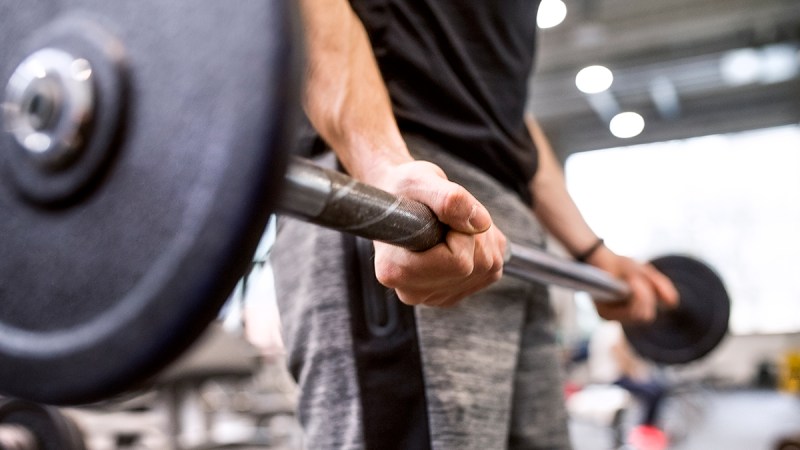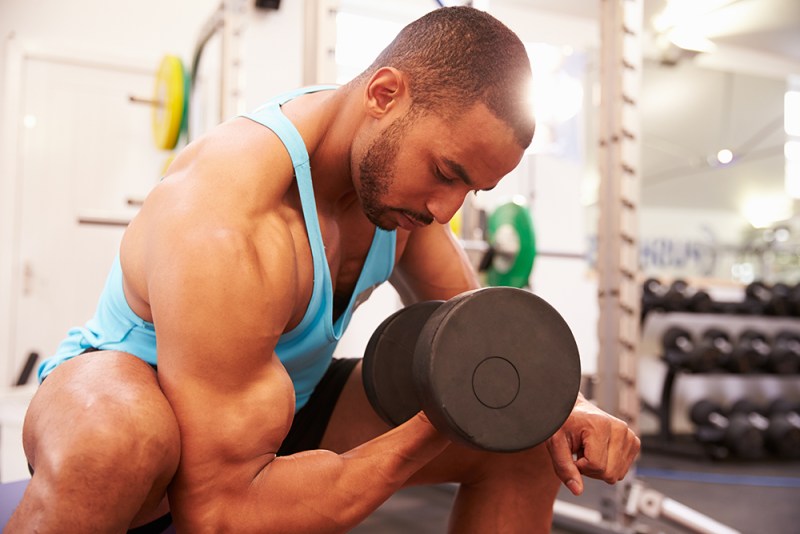Some exercises are designed to target a certain part of the body. They can also be so specialized that they are specific to a muscle or muscle group, and spider curls are a great example.
CONTENTS
- What muscles do spider curls target?
- Do you need any equipment for spider curls?
- How to perform spider curls
- Spider curl variations
- How often should you do spider curls for optimal results?
Spider curls are designed to strengthen the muscles in the arms, particularly the biceps. Strong biceps help with everyday activities, as they are activated when carrying or lifting objects, which most of us do regularly.
Recommended Videos
ESPN+ Join the Evolution
So with this in mind, what exactly are spider curls? Keep reading for the complete guide on everything you need to know about this exercise, including how to perform them, variations you can try, and how often they should be performed for optimal results.
What muscles do spider curls target?

As mentioned, spider curls are an isolation exercise that targets the bicep muscle. The biceps are located on the front of the upper arm and take much of the force when lifting heavy objects.
Including spider curls in a regular exercise program can help build and tone the biceps, leading to more arm power that can be utilized in daily life and when performing other exercises in a gym or at home.
Do you need any equipment for spider curls?

Spider curls can be performed using various types of equipment, and, unfortunately, there isn’t a bodyweight-only version.
Equipment needed for spider curls includes weights, such as dumbbells, barbells, or an EZ curl bar. Choosing weights you are comfortable with will make the curls easier and safer to complete.
No matter what form of resistance you choose, an incline bench is always needed. This is the safest and most practical way to get the most out of this exercise, as it can help ensure safety and correct posture during each curl.
How to perform spider curls

- Begin by setting up an incline bench to a comfortable angle, usually around 45 degrees.
- Sit face down on the bench with your chest against the backrest and your arms hanging straight towards the floor by your sides.
- Grip the dumbbells or barbell with an underhand grip, keeping your palms facing up.
- With your upper arms stationary, bend your elbows to slowly curl the weights towards your shoulders, squeezing your biceps at the top of the movement.
- Lower the weights back down in a controlled manner, fully extending your arms before beginning the next rep.
Spider curl variations

As is often the case with established exercises, variations on the original theme appear, and this has happened with spider curls. Some variants improve on the original or are created to improve bicep activation or activate even more muscles. Either way, these variations can keep things interesting and fun as you pursue your muscle-building goals.
- Alternating spider curls: As the name suggests, you can perform spider curls one arm at a time, alternating between arms with each rep to increase the intensity.
- Hammer spider curls: This variation involves using a neutral grip with your palms facing each other to target the brachialis muscle.
- Preacher bench spider curls: For curls, you can use a preacher bench instead of an incline bench. This changes the angle of the exercise and shifts the focus to different areas of the biceps.
How often should you do spider curls for optimal results?

To get optimal results from spider curls, incorporate them into your workout routine two to three times per week.
You can perform three to four sets of eight to 10 reps, focusing on proper technique throughout each set. This will ensure that you get maximum benefit from each workout session. Over time, you should start to see results if you are consistent with spider curls, as well as fuel your body properly.
Things to avoid

- Over-exercising: It is tempting to rush the entire exercise process to obtain rapid results. This usually means you exercise every day without any rest periods in between. This can result in fatigue and injury, such as muscle pulls. For optimum results from exercise, including curls, avoid targeting the same muscle group two days in a row.
- Using excessive weight: Choose a weight that allows you to maintain proper technique and complete the full range of motion without straining. Again, this can help prevent muscle and joint injuries.
- Arching your back: Keep your core engaged and your body flat against the bench to protect your spine and maintain stability throughout the exercise. Using a manageable weight can also help prevent bad posture habits from developing. The muscles that are supposed to take the full force of a curl will do so without straining, which can happen when applying too much weight to bars. Increasing the load should be a gradual process in response to boosted arm strength.
As with all forms of exercise, it is best to listen to your body and progress slowly. Remember to eat sensibly and increase your protein intake to aid muscle building as well.



